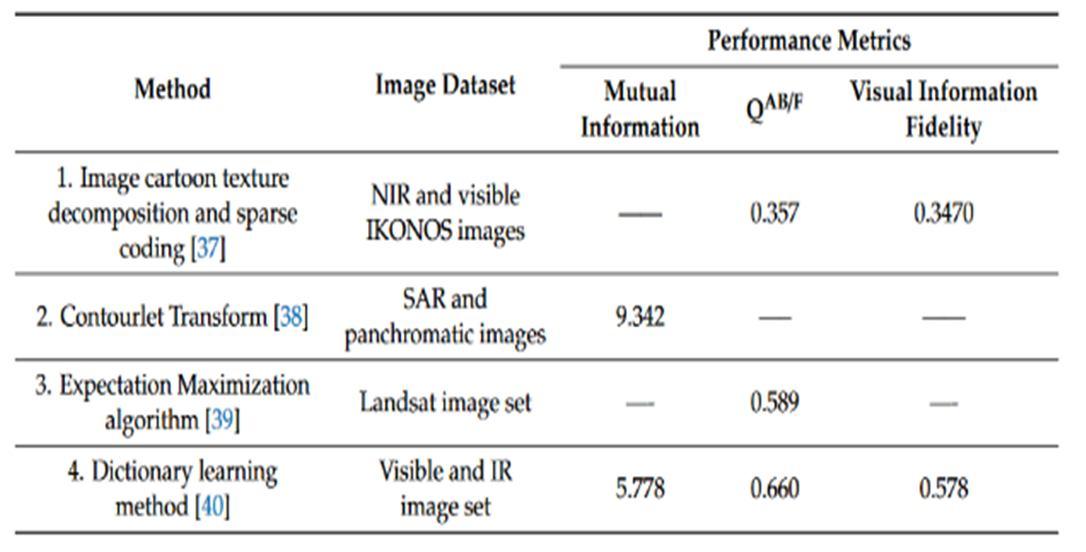
3 minute read
International Journal for Research in Applied Science & Engineering Technology (IJRASET)

ISSN: 2321-9653; IC Value: 45.98; SJ Impact Factor: 7.538
Advertisement
Volume 11 Issue III Mar 2023- Available at www.ijraset.com
IV. COMPARITIVE STUDIES
These spectral meter used in satellite for improvised and quality image of the earth, some of the satellite mostly used :
1) Landsat 7 ETM+ Satellite Sensor (15m): The Landsat 7 ETM+ satellite sensor was successfully launched from the Vandenburg Air Force Base on April 15, 1999. Landsat 7 satellite is equipped with Enhanced Thematic Mapper Plus (ETM+), the successor of TM. The observation bands are essentially the same seven bands as TM, and the newly added anchromatic band 8, with a high resolution of 15-meters was added.
2) ASTER Satellite Sensor (15m): ASTER is a 15-meter, 14 band multispectral resolution instrument. It can be used for land cover and change detection, calibration, validation, and land surface studies.
3) GeoEye-1 Satellite Sensor (0.50m): GeoEye-1 is capable of acquiring image data at 0.50-meter panchromatic (B&W) and 1.84meter multispectral resolution. The satellite, which was launched at Vanderberg Air Force Base, California, provides a resolution of 0.46-meters
ISSN: 2321-9653; IC Value: 45.98; SJ Impact Factor: 7.538

Volume 11 Issue III Mar 2023- Available at www.ijraset.com
V. RESULTS OF EXISTING WORK
1) Satellite image processing is one of the most important computer techniques with applications in the military, agriculture, natural disaster prevention, identification of natural resources, etc. In this spectral resolution which identifies the band width fro wave length as for every system the spectral resolution is improved time after time th improvement like increase in the band width, precise pixel location, detecting color, improving pixel quality devices name as hyperspectrometer for multiband, mass spectrometer, NMR spectrometer and the optical spectrometer. The output of the system which are built were the most helpful for the society and to upcoming which are we going to face in the world and researcher and still improving this tech for betterment of the society.
2) Kunbo Liu, et. al., concluded that the proposed method of using IRRA method is both Robust as well as it is outperforming a couple of existing state-of-the-art methods, from qualitative and quantitative aspects. It has some major characterstics: 1) Independent of Master Images, 2) elimination of outliers, & 3) Optimal solution from a Global Point of view.
3) Lino Garda Denaro, Chao-Hung Lin, in their paper on Hybrid Canonical Correlation Analysis, the authors found that the storage cost of KCCA reduced from 114.3 GB to 5.6 GB, and also the computation cost is improved from it require 49hrs to 7.9sec for images of size 200x200. They also observed superiority of Hybrid Regression over simple Linear and Non-Linear Regression on basis of quantitative analysis on the PIFs.
4) Ayse Kilic, et. al., in their paper to perform evapotranspiration (ET) on Landsat 8 and Landsat 7 images, concluded that the ET produced by Landsat 8 is same as Landsat 7 images.
VI. APPLICATIONS
Satellite images provide a true picture of earth and its environment in real-time. The large constellation of remote sensing satellites orbiting the earth provides a comprehensive and periodic coverage of the earth, enabling myriad uses for the benefit of mankind. Below are a few applications of satellite image processing -
1) Providing a base map for reference
2) Landuse/ Landcover Mapping
3) Planning for disaster mitigation
4) Monitoring Climate Change
5) Application in Agriculture and Forestry.
6) Used in satellite sensor to measure specific wavelength of the electromagnetic spectrum.
7) Used in system two distinguish between object.
8) Used in spectrometers.
9) Used in photogrammetry.
VII. CONCLUSION
Therefore, we have studied Satellite Image Processing Using Radiometric Resolution. To execute our project, we used CNN or Convolutional Neural Network Model, therefore, giving us a very high accuracy rate.
We were also able to conclude that images obtained from Landsat-8 and Landsat-7 satellites are very descriptive and clear, and thus it was a useful dataset for our model. Also the Nasa’s Worldview dataset proved to be a very informative dataset.
References
[1] Yongjun Zhang, Lei Yu, Mingwei Sun, and Xinyu Zhu, “A Mixed Radiometric Normalization Method for Mosaicking of High-Resolution Satellite Imagery” IEEE Transactions on Geoscience and Remote Sensing, 2017
[2] Kunbo Liu, Tao ke, Pengjie Tao, Jianan He, Ke Xi, KAijun Yang, “Robust Radiometric Normalization of Multitemporal Satellite Images Via Block Adjustment Without Master Images” IEEE Journal of Selected Topics in Applied Earth Observations and Remote Sensing, 2020
[3] Lino Garda Denaro, Chao-Hung Lin, “Hybrid Canonical Correlation Analysis and Regression for Radiometric Normalization of Cross-Sensor Satellite Imagery”, IEEE Journal of Selected Topics in Applied Earth Observations and Remote Sensing, 2020
[4] Ayse Kilic, Richard Allen, Ricardo Trezza, Ian Ratcliffe, Baburao Kamble, Clarence Robison, Doruk Ozturk, “Sensitivity of evapotranspiration retrievals from the METRIC processing algorithm to improved radiometric resolution of Landsat 8 thermal data and to calibration bias in Landsat 7 and 8 surface temperature”, Remote Sensing of Environment, 2016
[5] Gang Hong, Y. Zhang, “A comparative study on radiometric normalization using high resolution satellite images”, International Journal of Remote Sensing, 2008
[6] Hamid Ghanbari, Saeid Homayouni, Pedram Ghamisi, Abdolreza Safari, “Radiometric Normalization of Multitemporal and Multisensor Remote Sensing Images Based on a Gaussian Mixture Model and Error Ellipse”, IEEE Journal of Selected Topics in Applied Earth Observations and Remote Sensing, 2018.




